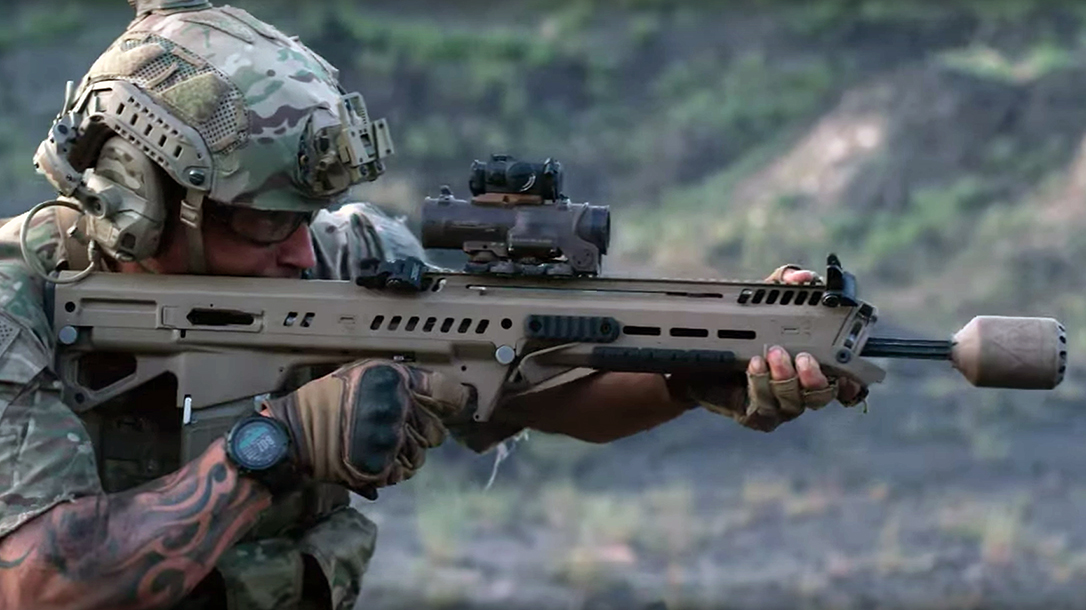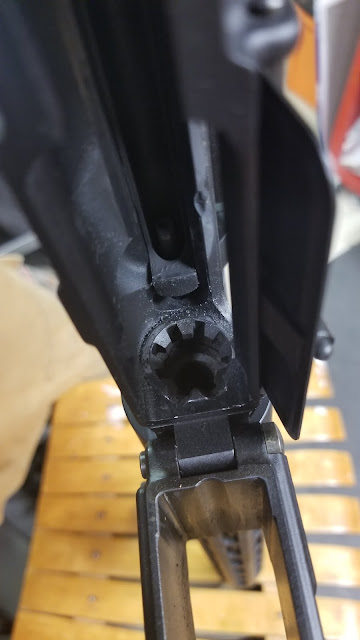The US Army NGSW Program

Introduction:
The US Army is currently in the midst of the Next Generation Squad Weapon (NGSW) program. The program was started by the Army as a response to the perceived performance issues of the M4 platform and its 5.56 NATO ammunition. Soldiers noticed issues with the 5.56's ability to reach out to targets while fighting in the mountains of Afghanistan. Soldiers had to rely more heavily on limited numbers of 7.62 NATO caliber weapons to engage targets at greater distances. This lead the Army to ask for a 6.8mm round for its NGSW program. This 6.8mm round not only has to perform better than 5.56, but it also needs to be lighter than current offerings. This lead to some interesting developments in ammunition, including polymer-cased and telescoping ammunition. Currently, the program has narrowed down to three contenders: General Dynamics, Textron Systems, and Sig Sauer.
First and foremost, the MCX rifles differ from normal AR-type rifles in that they utilize a short-stroke gas-piston system instead of the normal gas-impingement system. Sig's entry to the NGSW program goes even further in that Sig decided to add a side charging handle in addition to the normal on to the rear of the receiver. It's not totally clear why they did this, since it wasn't a requirement, but Sig decided to include it anyway. The real difference between Sig's entry to the NGSW program and anything else, is the ammunition it utilizes.Details:
The NGSW program calls for both a standard-issue rifle as well as an automatic rifle to replace the M249. I am going to focus on the rifle today, and I'll start with Sig. The Sig offering is essentially an up-scaled variant of their popular MCX rifles. It has been named the "Spear" by Sig and it has a couple interesting features beyond a normal AR/M4 variant:
Sig's hybrid ammunition is a typical brass case with a steel case head. This preserves the strength and heat-resistance of a typical metallic cartridge, while also reducing the overall weight of the ammunition. Personally, I am skeptical as to how much this actually reduces the weight of the cartridge. Especially compared to the other offerings, a fully metallic cartridge has got to be coming in last place in the weight class.
General Dynamics entered the competition with a more ambitious offering, a bullpup. Not a ton is known about how it works, but it is apparently gas AND recoil operated. It feeds from a typical box magazine, and has a side-charging handle that can be swapped to either side. Interestingly, many pictures of the system show side-offset iron sights instead of having irons affixed to the top rail. According to General Dynamics, the gas and recoil operating mechanism is intended to reduce recoil when fired in full auto. The 6.8mm round is a fairly fast and heavy round, so there definitely would need to be some solid engineering to reduce the recoil to something comparable to 5.56. General Dynamics actually sub-contracted to True Velocity for its ammo entry to the NGSW program. True Velocity came up with a composite cased 6.8mm round with a similar, but not quite the same, profile to a typical brass case.
True Velocity's 6.8mm round has a composite case with a steel or aluminum case head. There isn't much of a case neck, which brings in to question how well supported the bullet itself is in the case. There are some solid benefits to a composite case over brass, most evidently, weight. This composite case can offer up to a 30% weight reduction over brass. The composite case also does not conduct heat nearly as well as brass, so very little heat is transferred to the chamber upon firing. This is important, because the last thing you want is your ammunition melting when you chamber a round. If this ammo performs in the field as well as it appears to perform in testing, True Velocity may have something here.
Textron's entry into the NGSW program is, in my opinion, the most ambitious of the bunch. The core of this rifle really boils down to the ammunition: a polymer, telescoping cartridge. The ammunition has more in common with caseless ammo in terms of how it operates. It does not chamber and extract like a normal metallic cartridge, and needs a whole different operating mechanism in order to work.
Based on some videos showing these weapon systems working, it seems that they are all forward ejecting. This makes sense to me, in that you cant use a traditional extractor with this ammunition. I believe it functions via some mechanism that pushes the spent casing out of the chamber with the fresh round that is going in. In my opinion, Textron's entry is the least likely to be successful. Not only does it require a paradigm shift in weapon design, but it adds a lot of complexity to the standard-issue rifle.







Comments
Post a Comment